Explore Articles Filed Under: Plant Medicine
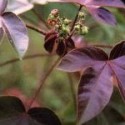
Among Amazonian mestizos, the world is often viewed in terms of male and female, macho and hembra. Not only animals but also plants — even inanimate objects — appear in both male and female forms; rain, for example, can be male or female, depending on the force with which it falls; if a plant species has two varieties, one with thorns, the one with thorns is considered male.

On the planet Sarkovy, one of the many imagined by science fiction writer Jack Vance, the inhabitants, called Sarkoy, are experts in the art of killing by poison. An adept of this art is called a venefice, and it is believed that a Master Venefice can kill a victim merely by walking past him. The venefices of Sarkovy are amateurs compared to sorcerers in the Upper Amazon. Throughout the Upper Amazon, people believe that they can be made sick through ingestion of noxious substances prepared by their enemies and put surreptitiously in their food or drink — bat saliva or phlegm, the burnt bones of dead humans mixed with the entrails of water snakes, the blood of a black dog.
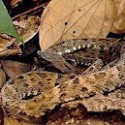
There are two families of venomous snakes in the Upper Amazon — the Crotalidae or pit vipers and the Elapidae or coral snakes. The Crotalidae are called pit vipers because they have a pit or depression between the eye and the nostril on each side of the head, which functions as an extremely sensitive infrared heat-detecting organ. In the United States, there are three genera of the Crotalidae family — the copperhead, the cottonmouth or water moccasin, and fifteen species of rattlesnake.
Mestizo shamanism of the Upper Amazon is closely associated with plant healing; indeed, anthropologist Françoise Barbira-Freedman speaks of vegetalismo as a syncretic mix of herbalism and shamanism. In this regard it is different from other Amazonian traditions, where shamans and herbalists occupy separate social and cultural niches. Shuar shamans, for example, have traditionally not used or prescribed plant medicine; such knowledge is widely distributed, especially among women, and herbal remedies have usually been tried before consulting a shaman in any event. Anthropologist Michael Harner, who worked with the Shuar in the 1950s and 1960s, is unequivocal: shamans, he says, never use herb remedies.
Among ribereños in the Upper Amazon, there is a body of traditional lore regarding both the uses and the administration of a relatively large number of Amazonian medicinal plants. My jungle survival instructor, Gerineldo Moises Chavez, who made no claims at all to being a healer, knew dozens of jungle plant remedies, including insect repellants, treatments for insect bites, snakebite cures, and antiseptics. While mestizo shamans claim to have learned the uses and administration of their medicinal plants from the plant spirits themselves, it is also true that their uses of the plants are, in most cases, consistent with widespread folk knowledge about the plants.
Mestizo shamans in the Upper Amazon maintain relationships with two types of spirits — the spirits of the healing plants, who appear almost invariably in human form; and the protective spirits, often powerful animals or birds or human beings, or the spirits of certain plants such as the spiny palms. The animals and plants that protect the healer are the same as those that carry out the destructive will of the sorcerer.
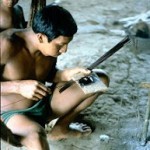
Very few indigenous peoples of the Upper Amazon hunt with blowguns any more. The weapon of choice is a 16-gauge shotgun. In North America, we tend to use 20-gauge shotguns for birds and 12-gauge for larger game; the 16-gauge is, in fact, an excellent all-around shotgun, useful for hunting medium-size jungle game — tapir, capybara, agouti, peccary, monkey. But there is a price. Hunting with a shotgun may be too efficient, making it easy to overhunt particular areas. Perhaps more important, it makes indigenous people dependent on manufactured goods: they cannot make, but rather must buy, shotgun shells.
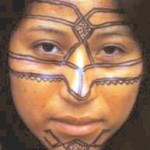
Face and body painting have been important parts of Amazonian culture for centuries. Face painting in particular has played an important part in hunting, warfare, and courtship. Traditional designs could designate status and identity. A man’s facial paint can give him courage and power; a woman’s facial paint gives her … well, sex appeal. Face painting also played important social roles; among the Shipibo, for example, painting a man’s face in traditional designs was a job performed only by women.
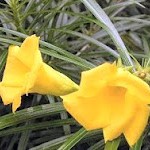
Two different different plants share the name camalonga or cabalonga, the first term being more common in in Perú and the second in Colombia. The first of these two plants, sometimes distinguished as camalonga negra, apparently may be any of several species in the genus Strychnos, including some that are used in the manufacture of the arrow poison curaré. The second, sometimes distinguished as camalonga blanca, is pretty clearly Thevetia peruviana, the yellow oleander.
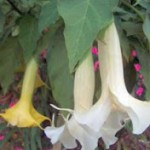
There seems to be a new moral panic percolating through the blogosphere, this time about a mind-control date-rape zombie-making plant called borrachero, or burundanga, or devil’s breath — “the world’s most sinister drug.” Under its influence, we are told, you remain lucid and articulate yet absolutely compliant to any suggestion.

Discussing the article:
Hallucinogens in Africa